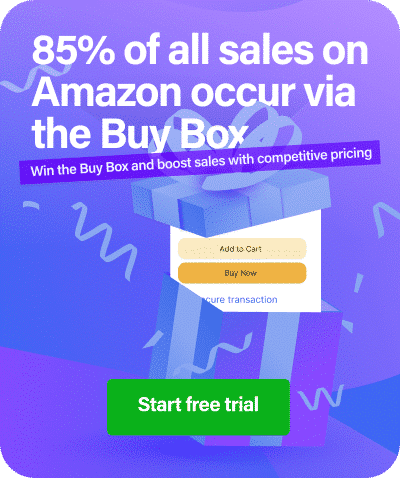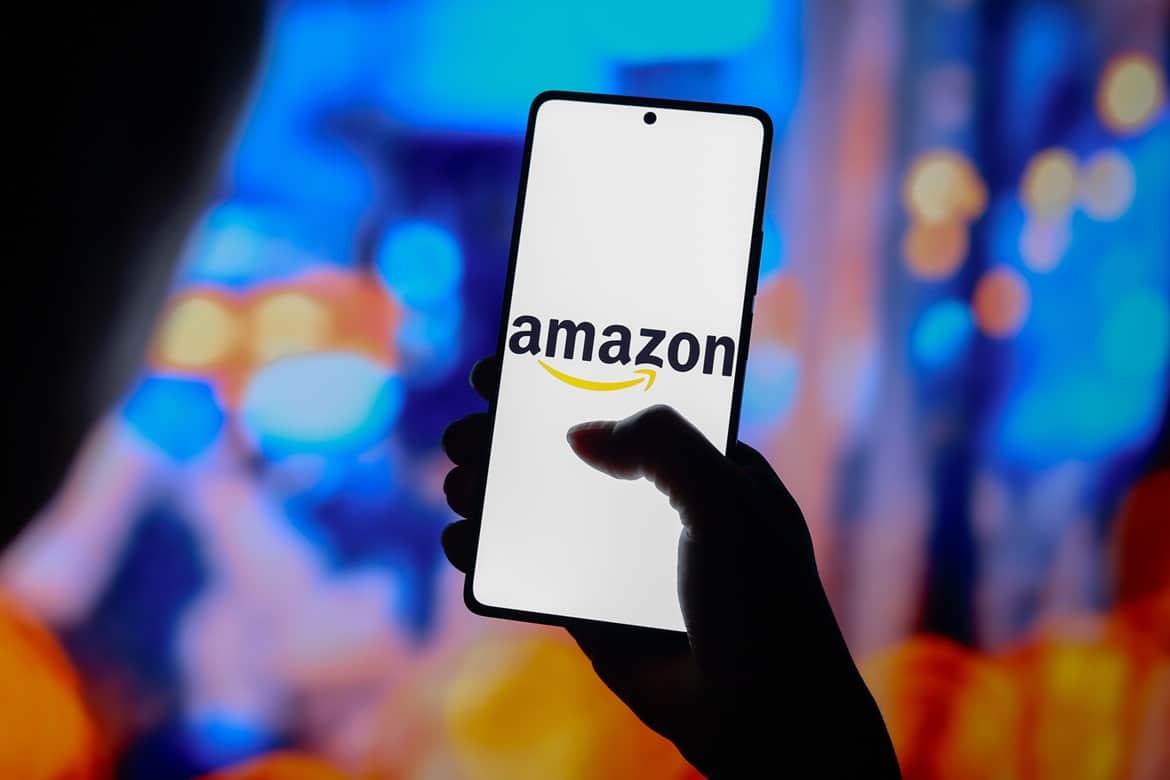Amazon and Shopify are both key players in the growth of ecommerce, making ecommerce selling increasingly accessible and beneficial for small and large businesses. While Amazon is still the clear winner when it comes to the volume of traffic hitting the platform with them having over 2.5 billion monthly visits, Shopify is not too far behind.
Both platforms are hugely popular for being easy to use and navigate, enabling businesses of all sizes and experience levels the opportunity to sell their products online. it comes to comparing the two and having a Shopify vs Amazon debate though, it is important to acknowledge that they provide largely different offerings.
The platforms are similar in terms of the sales opportunities they can provide, but when it comes to their individual features, the difficulties sellers face and your business’ unique needs, you should do plenty of research in identifying the right platform for you.
Repricer.com is here to help your brand weigh up your options and make educated selling decisions, whether you decide to use Shopify, Amazon, or both!
Shopify
To kick off the Shopify vs Amazon discussion, let’s take a look at the two one by one. Shopify is an ecommerce platform that provides users with a dedicated cloud-based space to create a dedicated online store for their brand to sell. Essentially, you can create and build an ecommerce website for your business to direct existing and potential customers to.
Shopify can be utilised by businesses of any size, but it’s important to keep in mind that you will have to start from scratch, building your own brand reputation, boosting visibility, and generating traffic to your store.
For brands that are already established online, Shopify can be highly valuable for creating a store that offers your audience a seamless, creative, and branded shopping experience. For new or smaller businesses though, you will need to be prepared to dedicate a significant amount of time and money towards generating brand awareness and promoting your store across channels.
What Are the Benefits of Selling on Shopify?
Range of Sales Tools
While the look and feel of an ecommerce site is important to provide potential customers with a positive first impression, it must offer users a smooth and seamless navigation and customer journey too. Shopify offers an incredible range of tools and features for sellers to use to optimise their user experience, branding and ultimately their sales.
The platform is constantly releasing new features, some that are included in their pricing packages and some that businesses can buy on their dedicated app store at an extra cost to add to their store.
Some examples of valuable sales tools that Shopify sellers can benefit from are:
- Business name generator
- Logo creator
- Slogan creator
- Abandoned cart recovery
- Inventory management system
- Automatic tax calculation
- App integration
Branding and Creative Freedom
While it may be challenging for emerging brands to set up a store and build a reputation, once you have established yourself through multi-channel marketing, the platform provides far more creative freedom and opportunity for branding.
You get complete control over your store’s look and feel, having the option to create a design from scratch or use an existing Shopify theme or template. Whether you choose to opt for a free theme or benefit from Shopify’s wide range of premium themes to build a professional-looking store that truly represents your brand.
Dedicated Store
Once you have built a name for your brand and have a steady flow of traffic hitting your site, you can benefit from having a dedicated store for your brand. Unless you have verified your brand on Amazon and created an Amazon Store, your products will be displayed alongside all your competitors and similar products, making it essential to offer competitive prices and optimised listings.
Having a dedicated Shopify store takes some slight pressure off your pricing and allows you to maintain a high-profit margin.
Seller Support
Finally, it is important to consider the level of support available to sellers. Shopify is renowned for offering a high level of support to businesses should you need assistance in creating your store, listing products or if anything goes wrong. Shopify has several support systems in place for businesses to take advantage of:
- 24/7 phone support
- Social media
- 24/7 live chat
- Forums
- Video tutorials
- Specialist support
- Help Centre complete with guides, tutorials, and articles
Costs
Shopify offers sellers three price plans to choose from – Basic, Shopify and Advanced. Each package naturally costs more than the other but in return brands can access and benefit from a larger volume and wider range of tools.
Basic Plan
Shopify’s basic plan is priced at $29 per month and aims to provide ‘all the basics for starting a new business’. With it, you get an ecommerce website and blog, unlimited volume of products, 24/7 support, multichannel selling, discount codes, a free SSL certificate, abandoned cart recovery and use of the Shopify app.
Shopify Plan
Shopify’s plans are completely scalable, which is why the Shopify plan is designed for established businesses that plan to use Shopify to grow their reputation. It offers businesses an increased number of staff accounts to manage the site and products, reports on the site’s progress and lower credit card rates.
Advanced Plan
The Advanced Plan goes even further, offering businesses fifteen staff accounts, advanced reporting, third-party calculated shipping rates and further low credit card rates to enable brands to scale up their selling.
In terms of accepting payments, Amazon, and Shopify both have their own payment gateways. You can use Shopify Payments to benefit from no transaction fees, or a whole host of other common gateways like PayPal and Amazon Pay to accept your payments which have varying fees.
Amazon
Rather than being an eCommerce platform that allows brands to create their own store, Amazon is a marketplace where sellers can sell their products alongside others. Rather than a consumer landing on your brands dedicated site, the billions of traffic that hits Amazon each month isn’t solely targeted at your individual products.
While brands that are registered on Amazon can create an Amazon Store within the marketplace, Amazon is particularly beneficial for small to medium-sized businesses to benefit from the huge amount of exposure.
What Are the Benefits of Selling on Amazon?
There are a few key reasons why Amazon is a valuable platform for brands to sell on.
Exposure
Amazon is arguably the most widely recognised eCommerce platform today, allowing sellers to benefit from this and gain a huge amount of exposure by using it to sell their products. Unlike Shopify where you will need to generate your own brand awareness and traffic, Amazon allows brands with no existing reputation to sell to a wide and large audience.
You don’t need a huge budget for cross-channel advertising or marketing meaning you can dedicate your time to managing your inventory, identifying new product opportunities and optimising your products to sell.
Fulfilment by Amazon (FBA)
Shopify provides sellers with tons of creative freedom and tons of support in setting up your site, but when it comes to fulfilling orders, you are on your own. Amazon, on the other hand, offer a Fulfilment by Amazon (FBA) service, allowing sellers to hand over all their inventory storage, packaging, and shipping to Amazon themselves.
They store your products in their own warehouses and carry out the entire order fulfilment process. The FBA program will cost you slightly more in fees, but in return, you get access to all Amazon Prime customers. Amazon Prime customers tend to spend far more on average per year than non-Prime buyers, making the FBA program hugely worthwhile for brands that can afford to pay the higher fees.
Costs
Amazon’s pricing plans are not as clear-cut, with fees varying depending on a range of factors. Sellers need to decided if they want to opt for a Basic or Professional plan. Learn more about the cost of selling on Amazon.
Individual Selling
The ‘Basic’ plan has no monthly payments, instead, you pay referral and shipping fees per sale. It’s aimed at those just starting out with third-party selling who have an inventory of fewer than forty products to offer per month.
Professional Selling
The ‘Pro’ plan is similar to ‘Basic’ in that sellers pay referral and shipping fees, as well as a monthly subscription payment to access a wider range of selling features and opportunities.
If your brand chooses to benefit from the FBA program, you will have another set of fees to consider. FBA fees vary per unit depending on the size, weight, product type and even the time of year that you choose to use the fulfilment program. On top of this, FBA charge a monthly inventory storage fee – all costs that need to be considered in your brand’s budgets.
In terms of accepting payments on Amazon, the platform has its own payment gateway known as Amazon Pay, which allows you to seamlessly accept payments from both debit and credit cards.
Integrating Shopify and Amazon
As of the last few years, you no longer even need to decide who wins the Shopify vs Amazon battle. Now, you can benefit from both platforms. Shopify can be integrated with Amazon to benefit from both the creative freedom and sales tools that Shopify provides, as well as the huge amount of exposure that comes with Amazon.
You can use Shopify to create an ecommerce website for your brand and sync your product listings, inventory, and product details directly with Amazon. You will need to setup an Amazon Seller account and add the Amazon Sales Channel to your Shopify store to have both a dedicated ecommerce store and have your products appear in the Amazon search results.
Keep in mind, the Shopify and Amazon integration is aimed at established brands who have the budget to support paying both Shopify and Amazon fees, as well as to invest in the monthly payments.
Should You Use Shopify or Amazon?
When deciding whether to use Shopify or Amazon, its all dependent on your unique business in terms of your products, budget, and goals. Consider what you need your ecommerce platform or marketplace to offer so you can weigh up your options and identify the best option for you. If you can afford to, why not integrate the two and use both?
Integrate Repricer.com With Shopify and Amazon
For brands that choose to use Shopify, Amazon, or both, it’s important to keep on top of your pricing to ensure you are being proactive and competitive with your strategies. Repricer.com supports large sellers and brands by allowing them to manage their competitive repricing across all marketplaces and ecommerce platforms.
All you need to do is enter your products costs, profit margins, stock levels and more and the tool will automatically lower or increase prices depending on demand, competition, peak periods, and more.
Repricer.com is the fastest Amazon repricer on the market and a proud member of Amazon’s Marketplace Developer Council. Book a demo or try repricing free for 14 days and increase your profits on Amazon, eBay, Walmart, Shopify and more.





